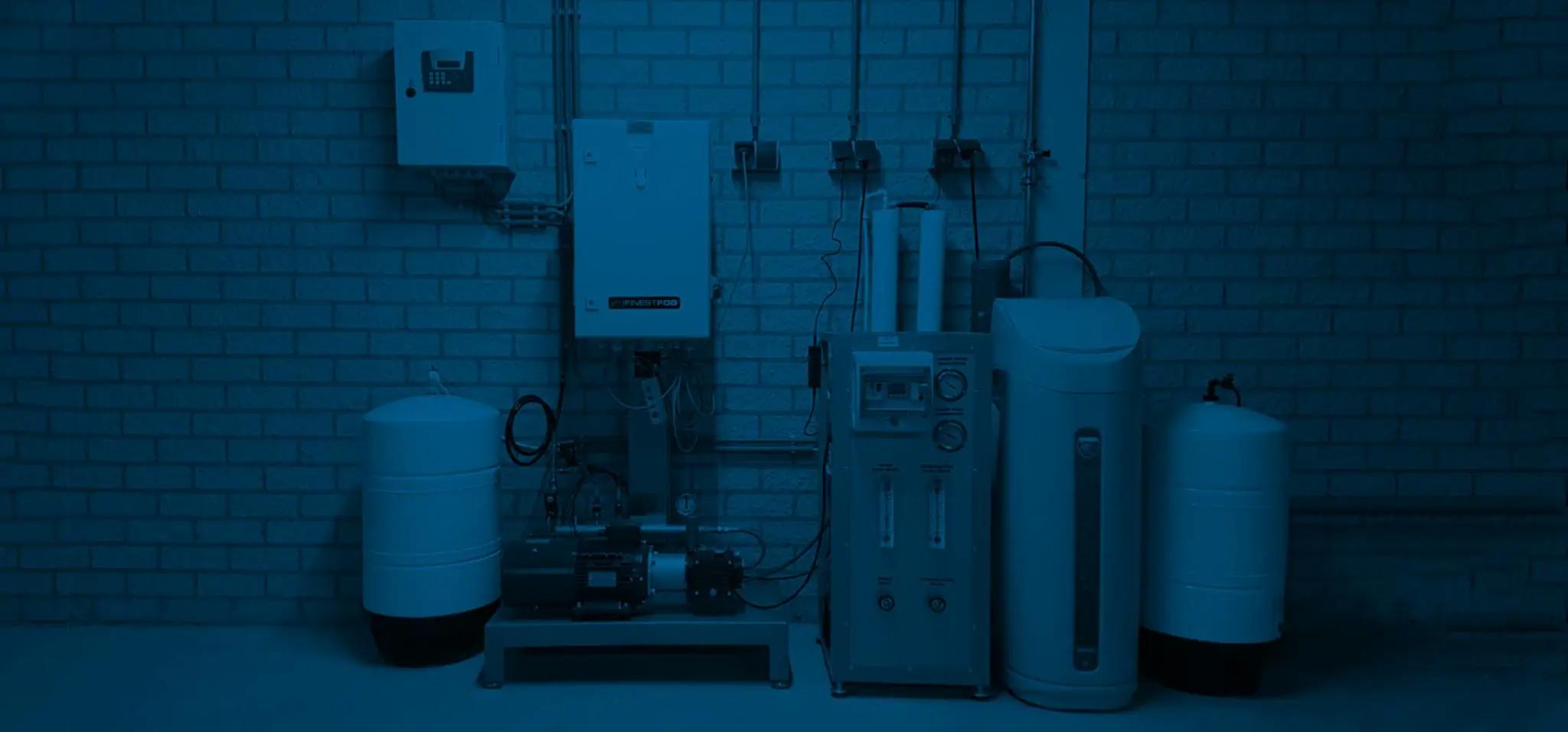Adiabatic cooling: efficient, sustainable and cost-saving
Adiabatic cooling is the solution for keeping larger spaces and halls at the right temperature. This system is also used as precooling for your dry coolers or condensers if the cooling capacity is not reached during the summer day. This innovative system works without coolants and uses considerably less energy than traditional air conditioning.
- Sustainable and environmentally friendly – no synthetic refrigerants
- Cost-effective – lower energy costs and minimal maintenance costs
- Clean and safe – improved air quality without additional burden
Adiabatic cooling can also help your business save money. Request a free quote.

What is adiabatic cooling?
The ancient Egyptians already knew it five thousand years ago: evaporative cooling is an effective way to cool interior spaces. Their technique with water-filled clay pots under ventilation holes forms the basis for modern adiabatic cooling, an innovative method that is increasingly replacing traditional air conditioning – especially in large commercial spaces and halls. Adiabatic cooling, also known as evaporative cooling, reduces the air temperature by evaporating water. The energy required for evaporation is extracted directly from the air, which cools it. This process is not only very energy-efficient, but also sustainable and environmentally friendly, without the use of synthetic refrigerants. Two forms of adiabatic cooling:
-
Direct adiabatic cooling The air comes into direct contact with the evaporating water, causing it to cool immediately.
-
Indirect adiabatic cooling The air is cooled without direct contact with water, thus maintaining the humidity.
Want to know which solution is best for your business? Contact us for a free consultation!

Why adiabatic cooling?
- Energy efficient & sustainable – lower costs, no synthetic refrigerants
- Healthy & safe – improved air quality without harmful substances
- Maximum efficiency – ideal solution for large rooms and halls
BBHUM is your specialist in adiabatic cooling!
Direct adiabatic cooling: efficient and energy saving
In direct adiabatic cooling, air is cooled by means of water evaporation. This is done in two ways:
-
Misting with nozzles, with or without fans Water is finely misted in the space via special nozzles. The water evaporates and extracts heat from the air, which lowers the temperature. The humidity increases, which can be beneficial for processes and comfort. Energy consumption? Only a few kW per hour for a hall of 10,000 m³!
-
Cooling via a moisture-absorbing material. Air is sucked through a special material that is saturated with water. A pump and pipe system ensure that the material remains continuously moist. Some of the water evaporates and cools the air flow without additional air resistance.
Advantages of direct adiabatic cooling:
- Extremely energy efficient – minimal power consumption, no synthetic refrigerants
- Cost effective – lower operating costs than traditional air conditioning
- Sustainable and environmentally friendly – 100% natural evaporative cooling

Indirect adiabatic cooling: efficient cooling without additional moisture
In indirect adiabatic cooling, the cooled air is not introduced directly into the room, but is transferred to a separate air stream via a heat exchanger. This makes it possible to cool rooms without increasing the humidity, which is essential for environments with strict humidity standards.
How does it work?
An air stream is humidified and cooled by evaporation. This cooled air passes through a heat exchanger, where the cold temperature is transferred to a separate supply air stream. The cooled air is then blown into the room, without adding extra moisture.
Why choose indirect adiabatic cooling?
- Constant humidity – ideal for environments with specific humidity requirements
- Very energy efficient – cooling without synthetic refrigerants or high electricity costs
- Sustainable and environmentally friendly – efficient cooling with minimal consumption
Perfect for production halls, data centers and other spaces where stable humidity levels are crucial.

